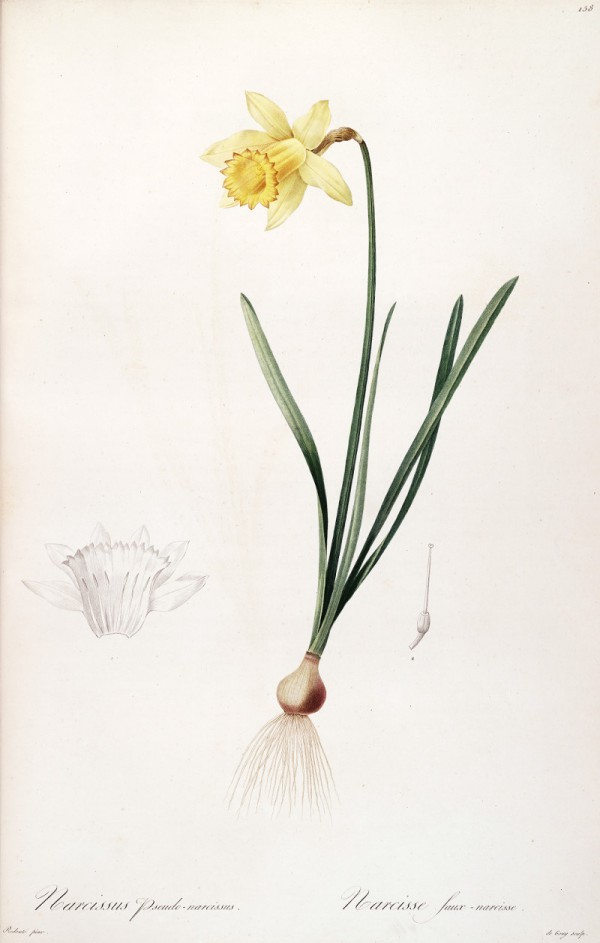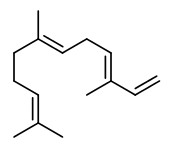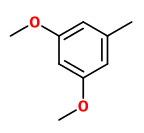Narcissus pseudonarcissus L. - Amaryllidaceae - buttercup, common daffodil, Osterglocke, Gelbe Narzisse
Perennial herb, up to 50cm high, native to Europe, naturalized and widely cultivated; leaves 3-5, glaucous; inflorescences 1-flowered, spathe pale brown; flowers fragrant, perianth white, perianth tube tapering abruptly to base, distinct portions of tepals erect to spreading, yellow, often twisted, oblanceolate, corona yellow, tubular, apex flared and ruffled. „Narcissus pseudonarcissus is the most variable species in the genus and includes many elements that sometimes have been recognized as separate species.“ http://www.efloras.org/florataxon.aspx?flora_id=1&taxon_id=242101787
Main volatiles found in the vacuum headspace concentrates of N.pseudonarcissus were (E)-ocimene (30%) and (Z)-ocimene (0.4%), (E,E)-α-farnesene (10%), 3,5-dimethoxytoluene (7%), and 1,4-dimethoxybenzene (5%).
[Surburg et al., Volatile compounds from Flowers, in: Teranishi, R.;Buttery, R. G.;Sugisawa, H. Bioactive volatile compounds from plants. (Book) 1993, 168-186]
HS-SPME/GC/MS of homogenized Narcissus pseudonarcissus cv. ‘Ice Follies’ petals showed ocimene (20.2%), hexanal (9.4%), 3-hexene-1-ol (9.3%), δ-3-carene (7.1%), α-pinene (6.9%), myrcene (5.6%), limonene (2.7%), benzene (3.9%), and 4-ethyl-pyridine (3.9%) as main volatiles. Minor components were α-farnesene (0.18%), bergamotene (0.71%), neryl acetate (0.57%), and phenol (0.93%) e.g.
[Floral Fragrances of Daffodil under Salinity Stress., Koksal, N., Kafkas, E., Sadighazadi, S., Kulahlioglu, I., Romanian Biotechnological Letters, 20(4), 2015, 10600] http://www.rombio.eu/rbl4vol20/6.pdf
Screening of Narcissus bulbs showed alkaloids present 0-0.927% (d.w.) with galanthamine 0-0.188% (d.w.).
[Kreh, Mirko. Studies on galanthamine extraction from Narcissus and other Amaryllidaceae. Taylor & Francis: London, UK, 2002, 256-272]
The main alkaloid of the bulbs, galanthamine, could be extracted from the plant matrix using supercritical fluid extraction (SFE) with supercritical CO2. 303 μg/g was the optimum galanthamine yield, other N. pseudonarcissus alkaloids such as O-methyllycorenine and haemanthamine were also obtained.
[Environmentally benign supercritical CO 2 extraction of galanthamine from floricultural crop waste of Narcissus pseudonarcissus., Rachmaniah, O., Choi, Y.H., Arruabarrena, I., Vermeulen, B., van Spronsen, J., Verpoorte, R., Witkamp, G.J., The Journal of Supercritical Fluids, 93, 2014, 7-19]

Redouté,P.J., Les Liliacées, vol.3, t.158 (1805-1816)
http://plantgenera.org/species.php?id_species=691477
Narcissus pseudonarcissus
© Rolf Marschner (2007),
www.botanische-spaziergaenge.at





